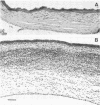Abstract
Quantitative techniques were used to determine the relative concentrations of viable bacteria and polymorphonuclear leukocytes (PMNs) in the corneas of neutropenic and non-neutropenic guinea pigs with experimental bacterial keratitis induced with three strains of Pseudomonas aeruginosa. Neutropenia was produced by whole-body X-irradiation 1 week before infection. Significantly greater numbers of bacteria were present in the cornea of neutropenic animals 48 h after infection than were present in the corneas of non-neutropenic animals. The same was true 24 and 48 h after infecting animals with Staphylococcus aureus. Examination of histological sections showed that fewer PMNs were present in the corneas of infected neutropenic animals than in the corneas of infected non-neutropenic animals. Radiolabeling of PMNs confirmed a significant reduction in PMN concentration in the corneas of infected neutropenic animals. Tears and the corneal epithelium appear to be the most important elements protecting the cornea against local invasion by bacteria. However, once bacterial keratitis is established, PMNs play a role in limiting bacterial multiplication.
Full text
PDF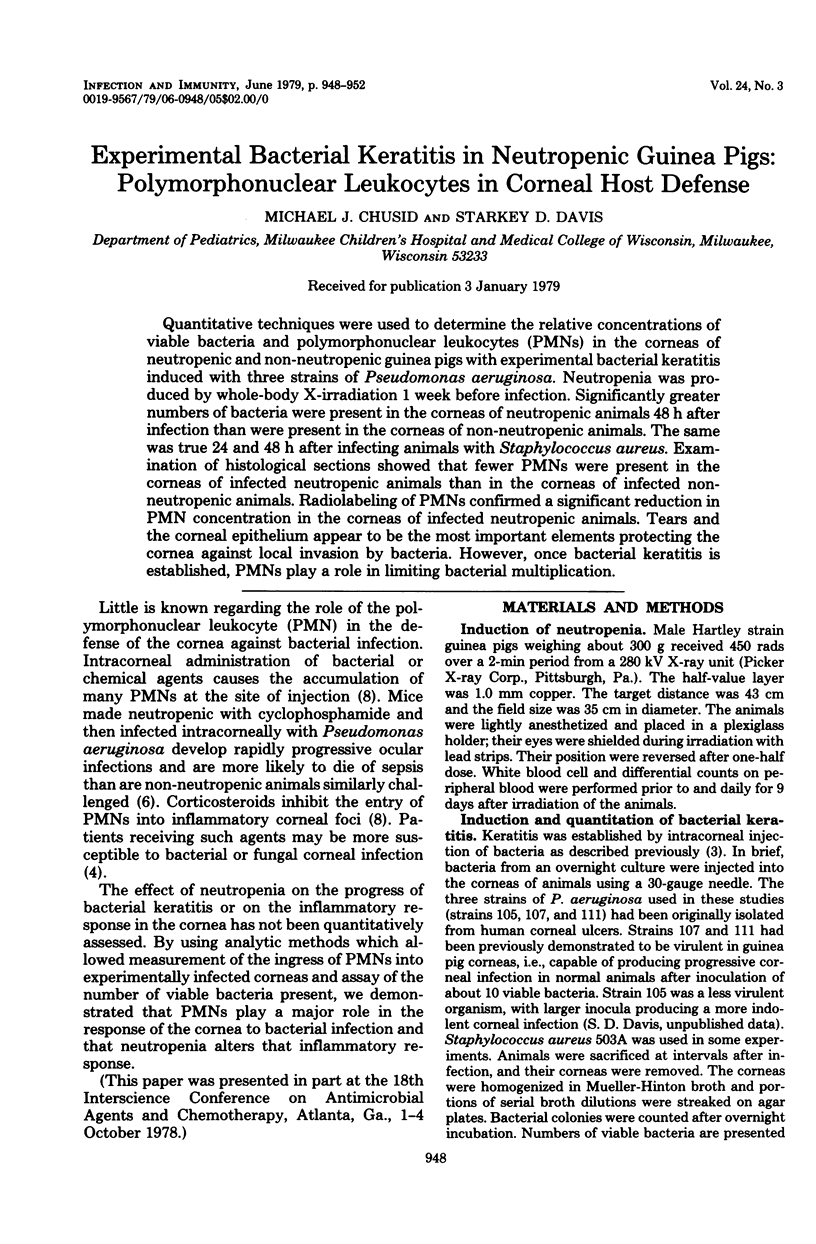
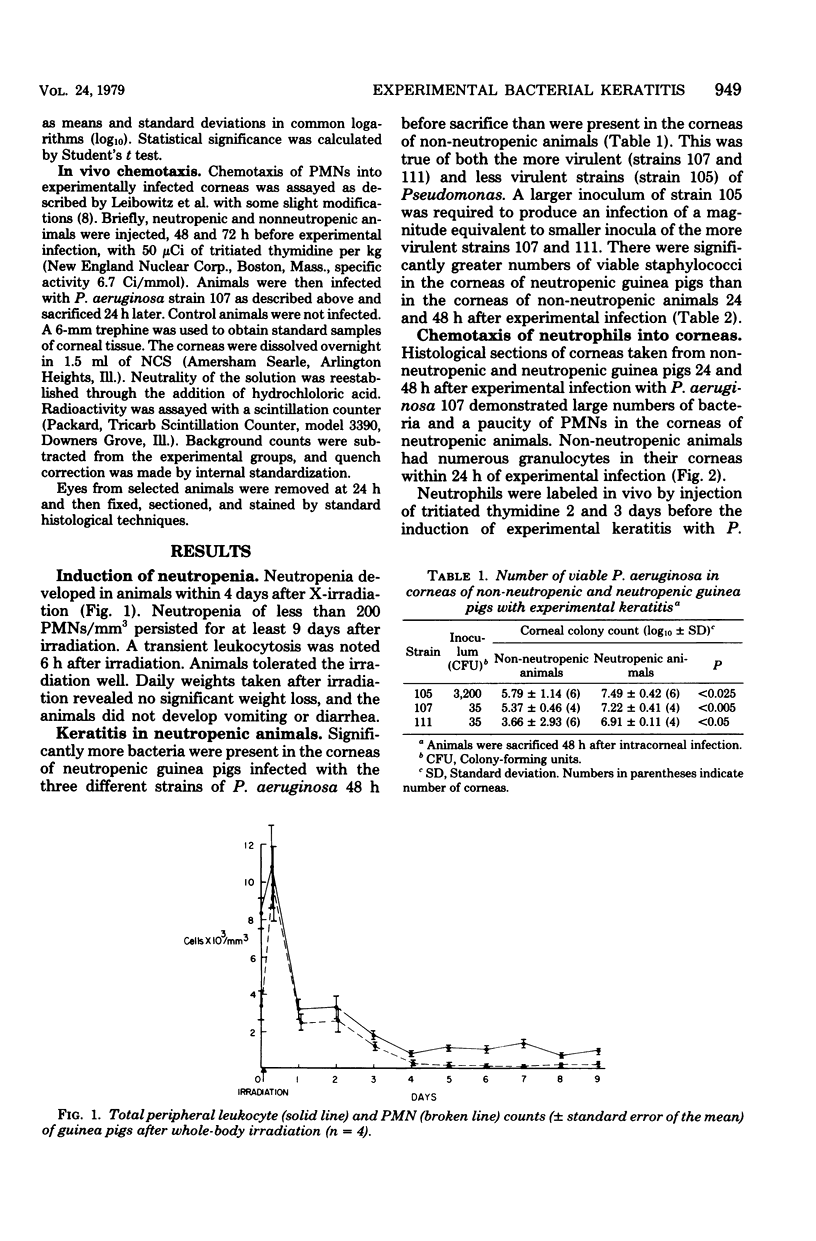
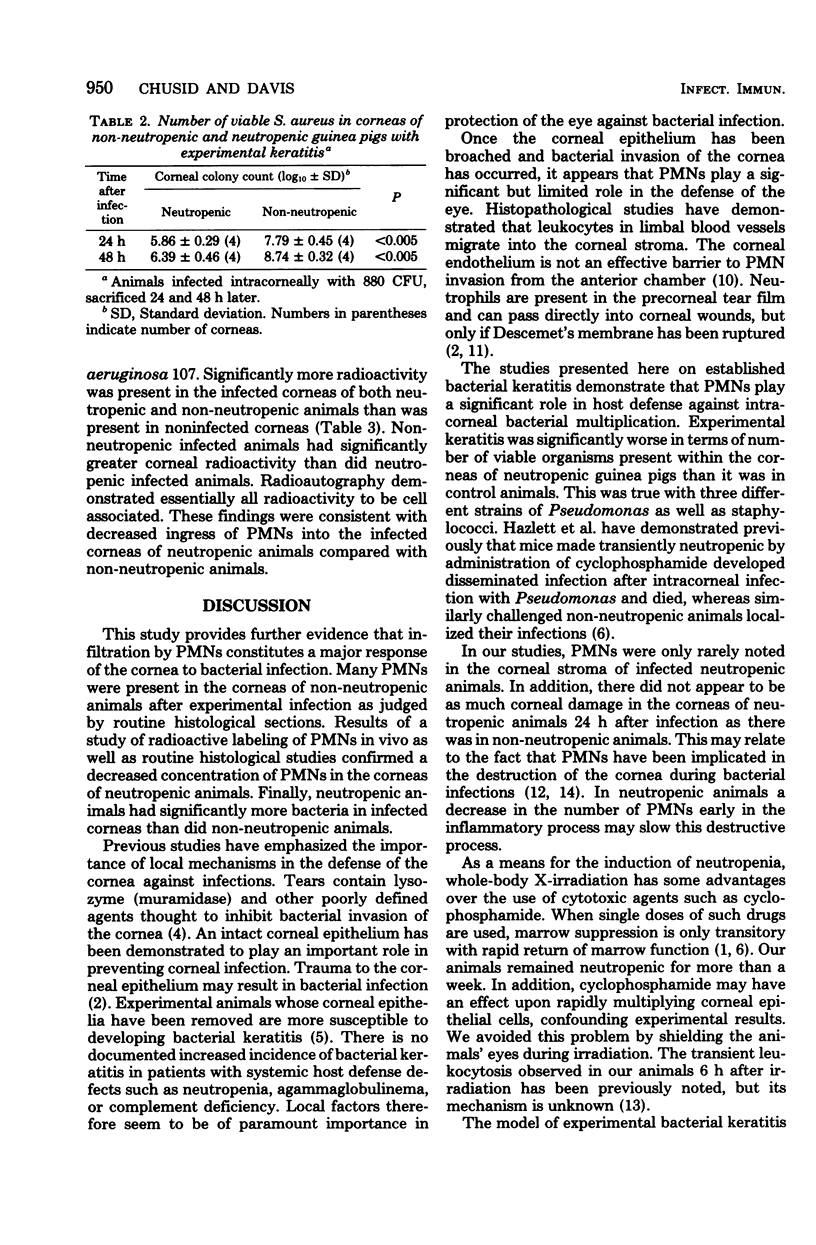
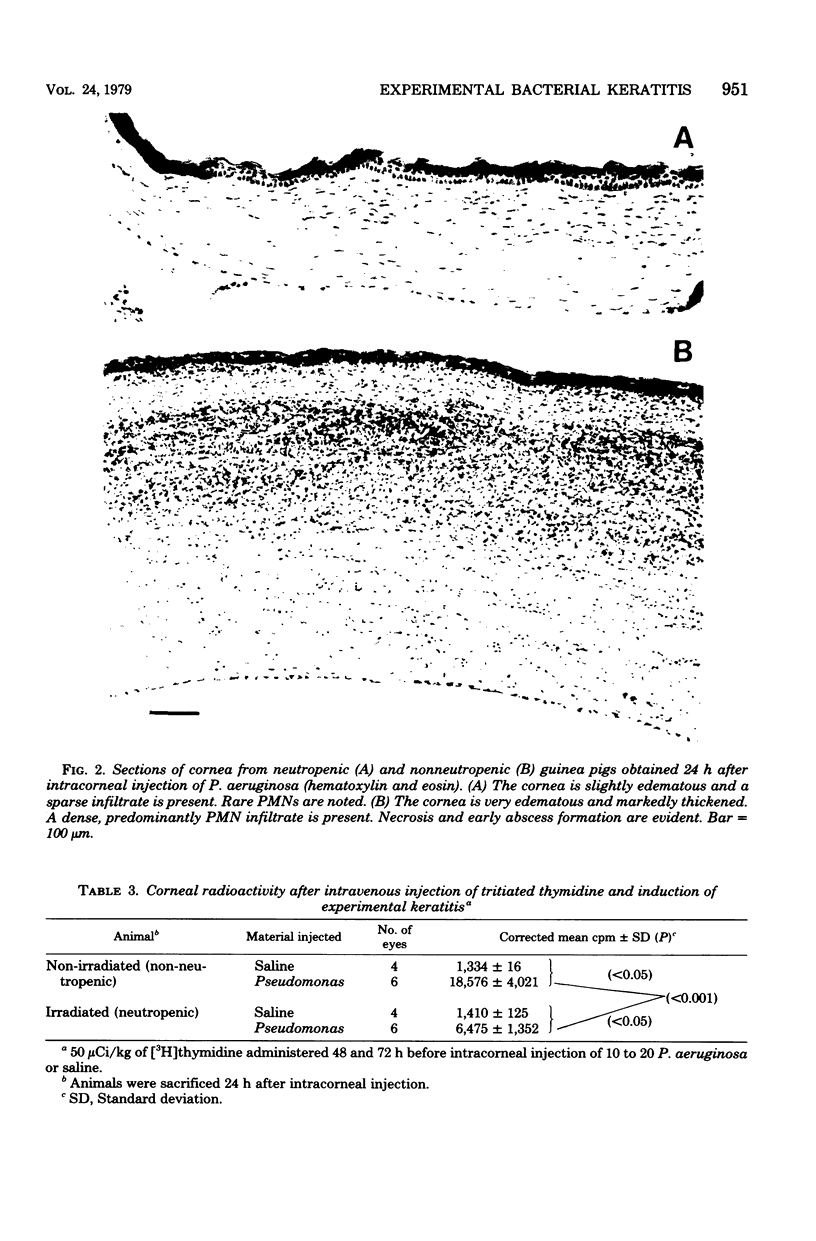
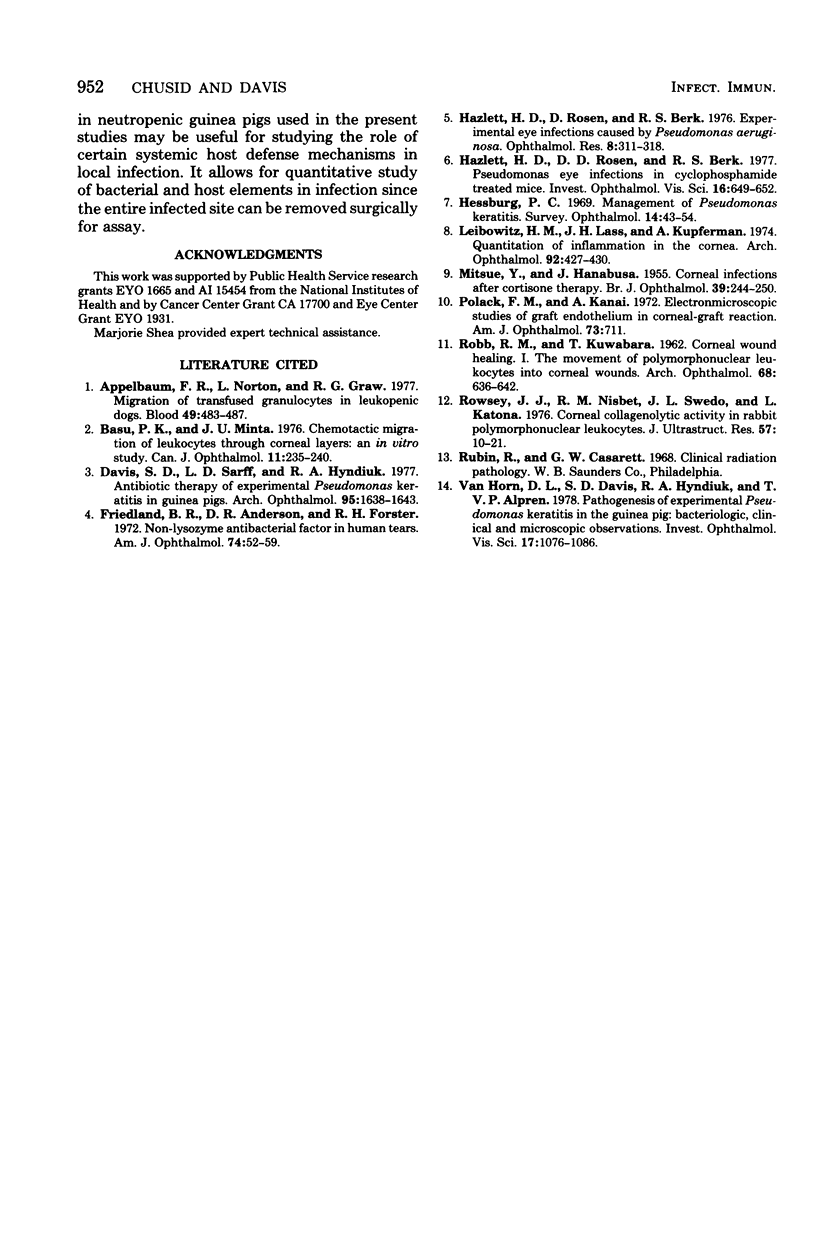
Images in this article
Selected References
These references are in PubMed. This may not be the complete list of references from this article.
- Appelbaum F. R., Norton L., Graw R. G., Jr Migration of transfused granulocytes in leukopenic dogs. Blood. 1977 Mar;49(3):483–488. [PubMed] [Google Scholar]
- Basu P. K., Minta J. O. Chemotactic migration of leucocytes through corneal layers: an in vitro study. Can J Ophthalmol. 1976 Jul;11(3):235–240. [PubMed] [Google Scholar]
- Davis S. D., Sarff L. D., Hyndiuk R. A. Antibiotic therapy of experimental Pseudomonas keratitis in guinea pigs. Arch Ophthalmol. 1977 Sep;95(9):1638–1643. doi: 10.1001/archopht.1977.04450090160016. [DOI] [PubMed] [Google Scholar]
- Friedland B. R., Anderson D. R., Forster R. K. Non-lysozyme antibacterial factor in human tears. Am J Ophthalmol. 1972 Jul;74(1):52–59. doi: 10.1016/0002-9394(72)91125-7. [DOI] [PubMed] [Google Scholar]
- Hazlett L. D., Rosen D. D., Berk R. S. Pseudomonas eye infections in cyclophosphamide-treated mice. Invest Ophthalmol Vis Sci. 1977 Jul;16(7):649–652. [PubMed] [Google Scholar]
- Hessburg P. C. Management of pseudomonas keratitis. Surv Ophthalmol. 1969 Jul;14(1):43–54. [PubMed] [Google Scholar]
- Leibowitz H. M., Lass J. H., Kupferman A. Quantitation of inflammation in the cornea. Arch Ophthalmol. 1974 Nov;92(5):427–430. doi: 10.1001/archopht.1974.01010010439014. [DOI] [PubMed] [Google Scholar]
- MITSUI Y., HANABUSA J. Corneal infections after cortisone therapy. Br J Ophthalmol. 1955 Apr;39(4):244–250. doi: 10.1136/bjo.39.4.244. [DOI] [PMC free article] [PubMed] [Google Scholar]
- Polack F. M., Kanai A. Electron microscopic studies of graft endothelium in corneal graft rejection. Am J Ophthalmol. 1972 May;73(5):711–717. doi: 10.1016/0002-9394(72)90389-3. [DOI] [PubMed] [Google Scholar]
- ROBB R. M., KUWABARA T. Corneal wound healing. I. The movement of polymorphonuclear leukocytes into corneal wounds. Arch Ophthalmol. 1962 Nov;68:636–642. doi: 10.1001/archopht.1962.00960030640012. [DOI] [PubMed] [Google Scholar]
- Rowsey J. J., Nisbet R. M., Swedo J. L., Katona L. Corneal collagenolytic activity in rabbit polymorphonuclear leukocytes. J Ultrastruct Res. 1976 Oct;57(1):10–21. doi: 10.1016/s0022-5320(76)80050-0. [DOI] [PubMed] [Google Scholar]
- Van Horn D. L., Davis S. D., Hyndiuk R. A., Alpren T. V. Pathogenesis of experimental Pseudomonas keratitis in the guinea pig: bacteriologic, clinical, and microscopic observations. Invest Ophthalmol Vis Sci. 1978 Nov;17(11):1076–1086. [PubMed] [Google Scholar]



